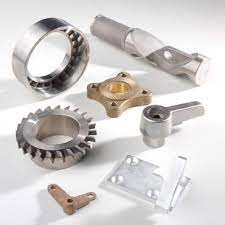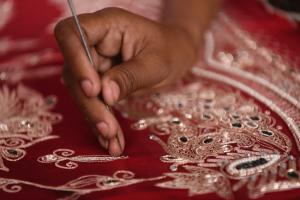
Surgical tools like forceps, clamps and hemostats are being made more durable and precise thanks to MIM parts. A 2020 study found that lengthy surgeries were shortened when surgeons used 3D-generated anatomic models as guides.
Medical MIM—also known as powder injection molding—is a cost-effective alternative to machining and offers design flexibility. Find out how this process is making life-saving medical devices possible.
1. Personalized Medicine
Your genes are unique, a unique code made of varying combinations of just four different chemical letters. Your genetic makeup determines your risk for diseases and how well medicines work for you.
Personalized medicine, also known as precision medicine, is the medical model of tailoring care to patients based on their specific needs and characteristics. These include genetics, medical history, and lifestyle data.
Metal Injection Molding has already helped revolutionize healthcare devices with its cost-efficiency, design flexibility and material diversity. In addition, it can produce parts with complex shapes and geometries that cannot be produced through traditional machining processes. Working with a CMO with experienced MIM engineers is key to optimizing your component designs for this process. This ensures that your MIM-produced part will meet the desired mechanical properties.
2. Minimally Invasive Procedures
Surgical procedures can be invasive, but medical marvels such as minimally invasive surgery have made it possible to perform complicated surgeries with smaller incisions. The benefits of this type of surgery include less pain and a faster recovery time than traditional open surgery.
Minimally invasive surgery involves inserting a scope, such as a laparoscope or endoscope, into the body with tiny cuts or no cuts at all. These tubes have a light and camera attached to them, which send images to the surgeon’s screen to guide them.
Metal injection molding (MIM) is a process that is ideal for manufacturing components for medical instruments with tighter tolerances and high degrees of articulation, and it is ideally suited to the demands of modern surgical equipment. A CMO with a broad range of capabilities, such as INDO-MIM, can produce medical MIM parts with efficiency and consistency while reducing costs.
3. Biodegradable Implants
Researchers have created a biodegradable device that could be swallowed and used to diagnose common cancers. The device can detect four of the most common cancers before they are even visible to the naked eye.
Scientists have taken the super-strong material Spider-Man spins his webs from and created a medical marvel. The scientists are using strands of silk fibroin, the main protein in spider and silk worm silk, to create a biodegradable composite that could replace metal plates and screws currently used by orthopedists to help repair broken load-bearing bones like ankles and knees.
Gall’s devices are strong enough to support loads, but also have porous structures that encourage bone and tissue ingrowth. They have even developed an implant that releases antibiotics to treat infections around artificial joints.
4. Cost-Effective
Medical MIM (sometimes referred to as powder injection molding) offers significant cost savings compared to other metal fabrication processes. This net-shape process eliminates costly material waste associated with machining, and it reduces the need for secondary operations as well as overall raw materials costs.
This enables device makers to produce high-performance, complex surgical instrument components and assemblies at an affordable price. And it gives healthcare professionals access to individualized medicine, minimally invasive procedures and biodegradable implants.
However, to make the most of Medical MIM’s potential, designers should take into account several key factors. These include part size parameters, dimensional tolerances and the ability to make frequent design changes. In addition, manufacturers must ensure the alloys used meet FDA and biocompatibility requirements. And they must be able to produce parts at high volumes.
5. Design Flexibility
MIM’s ability to produce small, intricate components enables medical designers to create new designs that may improve the patient experience. This includes components that require minimally invasive procedures and may help reduce hospital stays.
In addition, the MIM process is highly repeatable, which increases consistency for medical devices and ensures that dimensional tolerances are met. This allows medical device manufacturers to focus on engineering, design, and testing the product for safety and performance.
Another benefit of MIM is that it produces parts from a variety of metal alloys, including the FDA-approved nickel-titanium alloy Nitinol. These alloys are often used for surgical instruments due to their ability to withstand sterilization and handle harsh conditions. This flexibility allows medical engineers to develop instruments that are more ergonomic and improve the surgeon’s dexterity and control during surgery.


